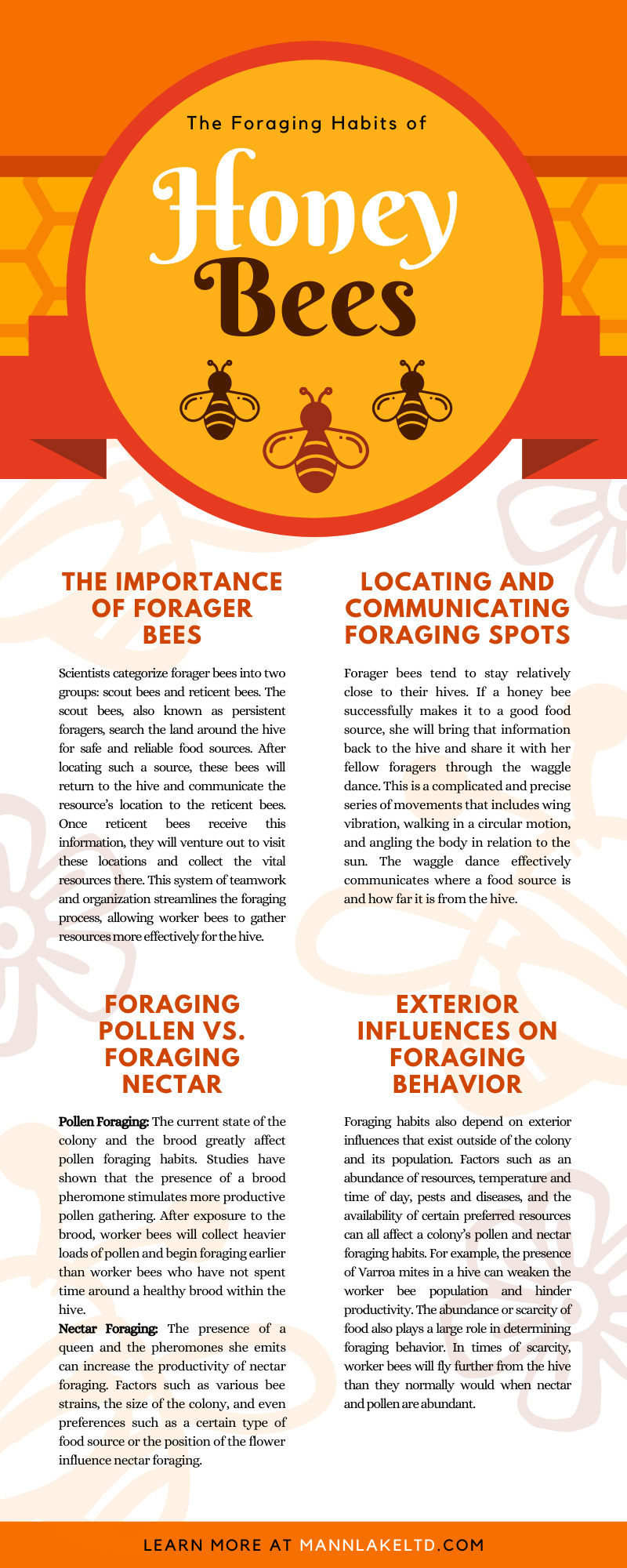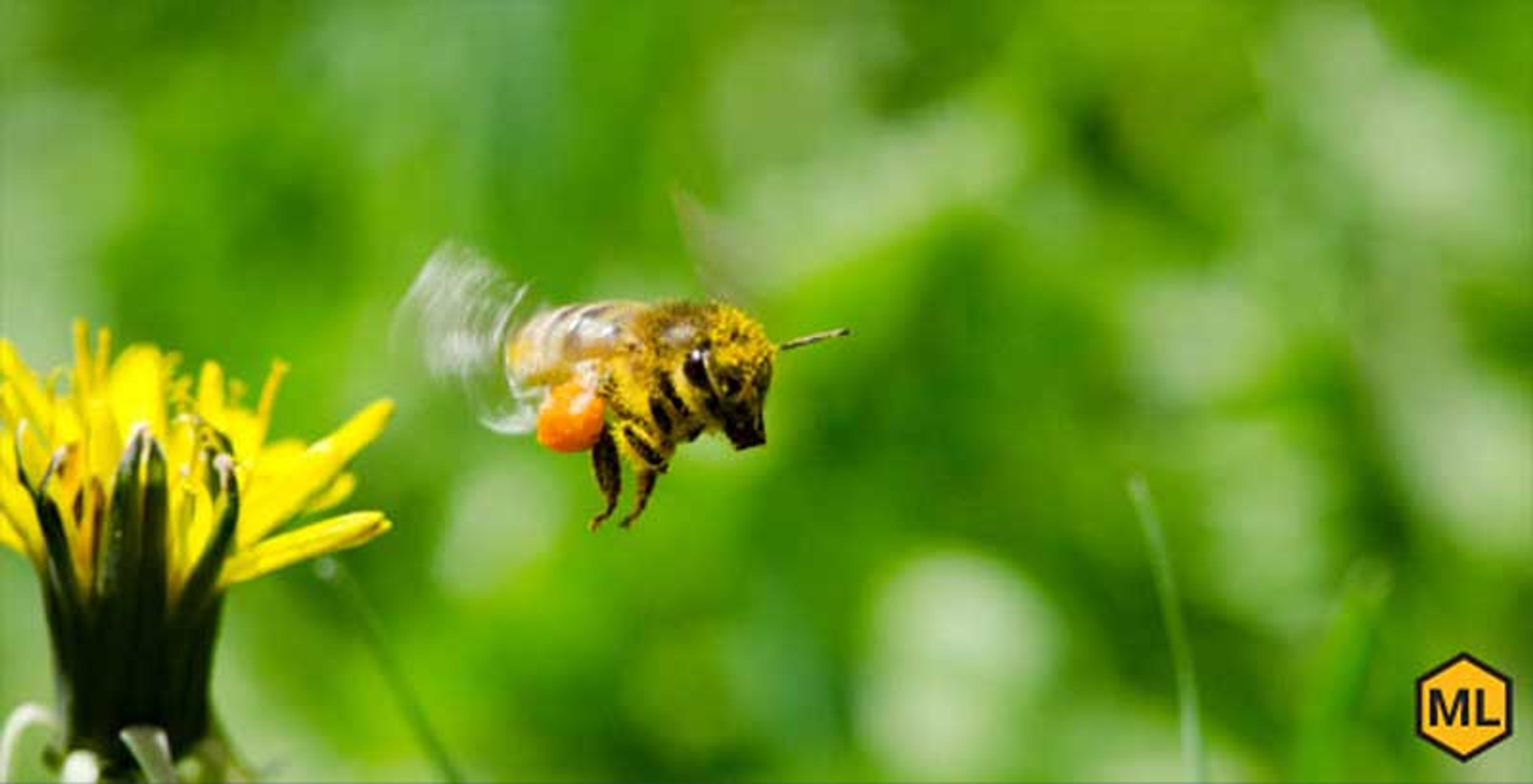Foraging Bees: Honey Bees and Their Foraging Habits
All living creatures need some form of sustenance to live. For humans, this usually entails buying or making food for yourself and your family. Just as we humans do, honey bees rely on a diligent process to gather and provide food for their colonies. They achieve this through foraging.
While the idea of foraging is simple—visit flowers, gather resources, and return home safely—the process includes many details and variables. Who takes on the task of foraging? Why is it so important for the rest of the colony? How does foraging change throughout the seasons or as the colony fluctuates?
These questions and more have intrigued scientists and honey bee enthusiasts alike for years. We’re constantly learning more about our small buzzing friends. You can learn more as well through this overview of honey bees’ foraging habits.
The Importance of Foraging Bees
Honey bee colonies consist of a queen, brood, drones, and worker bees. These worker bees make up the majority of the population and carry out most of the tasks essential to survival.
One subgroup of worker bees works to forage for resources—primarily nectar and pollen. Worker bees will take on the task of foraging when they reach about three weeks old. They continue to forage for the hive for the last three weeks of their lives.
Scientists categorize honey bee foragers into scout bees and reticent bees. The scout bees, also known as persistent foragers, search the land around the hive for safe and reliable food sources. After locating such a source, these bees will return to the hive and communicate the resource’s location to the reticent bees.
Once reticent bees receive this information, they will venture out to visit these locations and collect the vital resources there. This system of teamwork and organization streamlines the foraging process, allowing worker bees to gather resources more effectively for the hive.
Locating and Communicating Foraging Spots
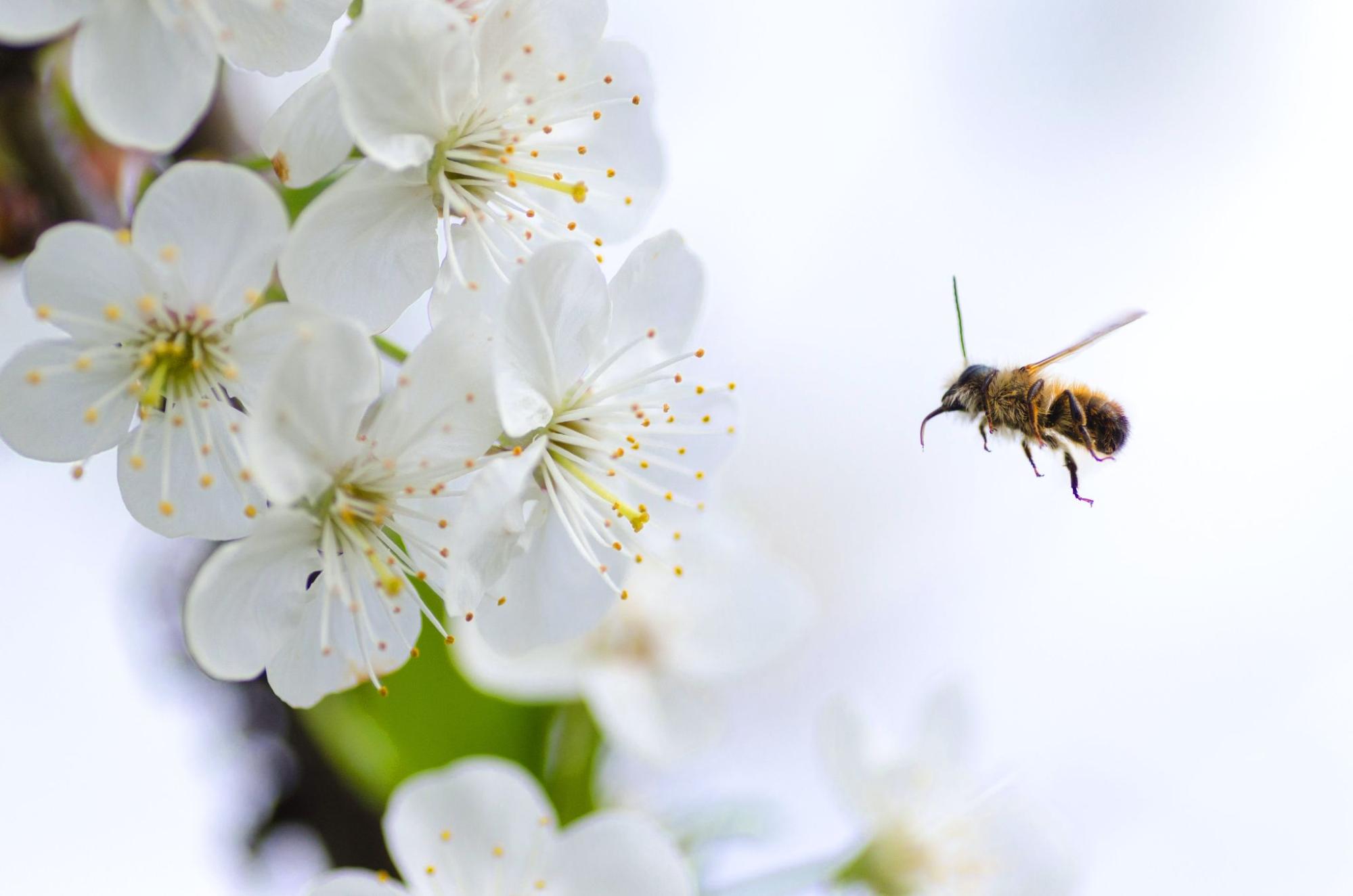
This process is one of the most crucial foraging habits of honey bees. How do worker bees do it? Forager bees tend to stay relatively close to their hives. Foragers usually operate within a two-mile radius of their hive, although factors like the surrounding landscape, colony size, and season can influence this range.
Despite its proximity to home, this area can be full of dangers. Forager bees contend with toxic pesticides, threats from predators, and other hazards as they work. However, once a honey bee locates a valuable food source, she navigates back to the hive and performs a unique sequence of movements known as the waggle dance.
The waggle dance is a complicated and precise series of movements that includes wing vibration, walking in a circular motion, and angling the body relative to the sun. This dance effectively communicates where a food source is and how far it is from the hive.
Foraging Pollen vs. Nectar
Nectar and pollen are the two main resources forager bees search for. Nectar is necessary to make honey, which feeds a majority of the honey bee colony. Meanwhile, protein-rich pollen is a staple in the honey bee diet, especially for the brood that will grow into the next generation of worker bees. However, forager bees approach each of these resources differently.
Pollen-Foraging Behavior
One of the primary reasons to collect pollen is to feed the brood. Larvae feast on bee bread (a pollen-based mixture) to obtain the proteins, vitamins, and other nutrients necessary for their growth. Without a steady supply of pollen, female larvae cannot become healthy, functioning worker bees.
The current state of the colony and the brood greatly affect pollen-foraging habits. Studies have shown that the presence of a brood pheromone stimulates more productive pollen gathering. After exposure to the brood, worker bees will collect heavier loads of pollen and begin foraging earlier than worker bees who have not spent time around a healthy brood within the hive.
Genetic variation also influences pollen foraging. There are various high pollen-hoarding and low pollen-hoarding strains of honey bees. Some studies imply that high pollen-hoarding strains might be more responsive to the brood pheromone that prompts more effective foraging. However, researchers are still studying the cause behind these two different strains of honey bees.
Nectar-Foraging Behavior
Unlike pollen-foraging habits, nectar-foraging behaviors do not directly correlate with the current state of the colony, its honey stores, or its brood. However, the presence of a queen and the pheromones she emits can increase the productivity of nectar foraging.
While the status of the colony only has limited influence over nectar-foraging behaviors, other factors still play a substantial role. The diversity of bee strains, the colony’s size, and preferences in food sources or the flower’s location can impact nectar foraging.
External Influences on Foraging Behavior
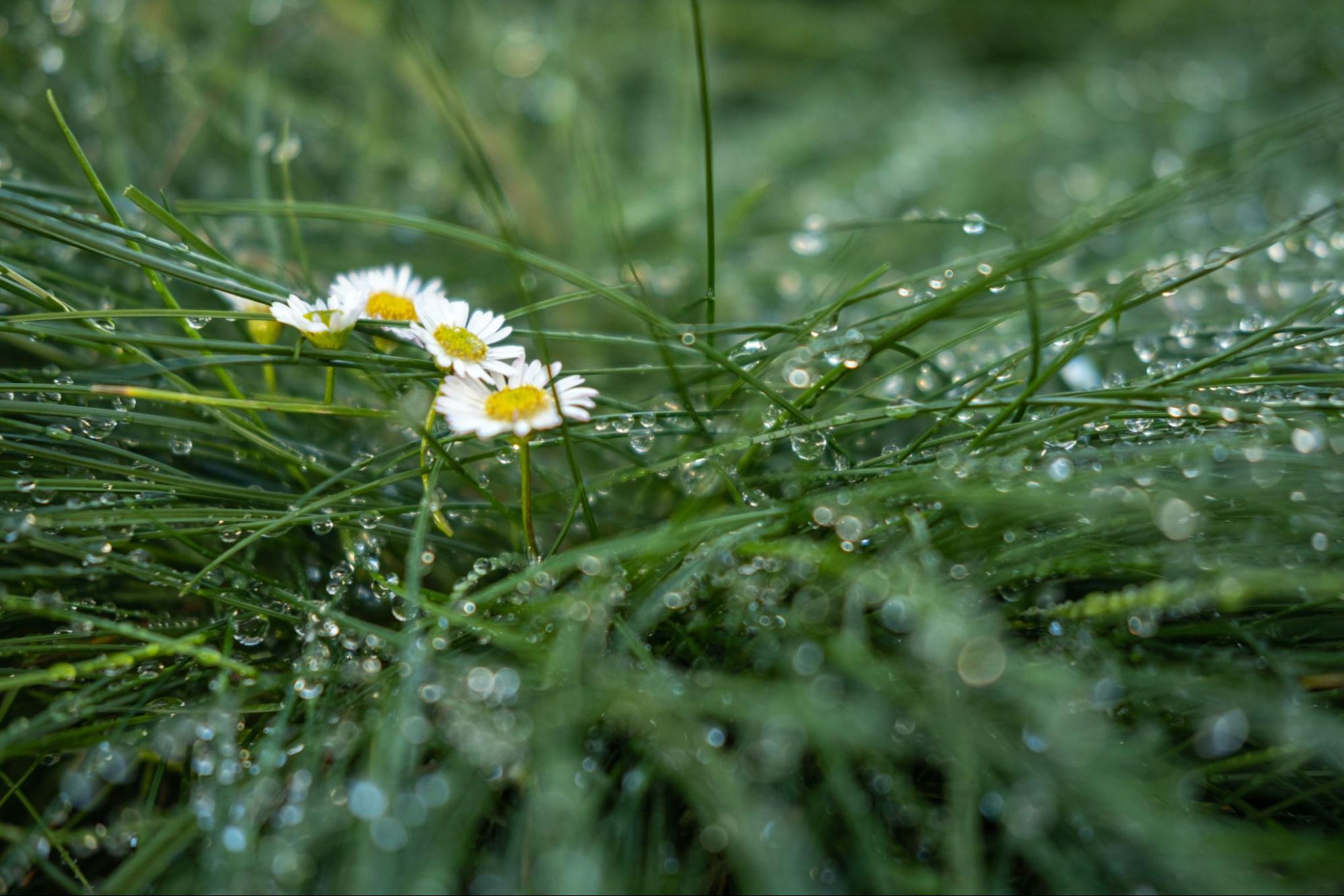
Honey bee foraging behavior isn’t only influenced by internal factors like the brood, queen, colony size, and foraging bees themselves. It’s also significantly affected by external elements beyond the control of the colony.
Availability of resources, daily temperatures, time of day, presence of pests or diseases, and the accessibility of preferred resources all bear heavily on a colony’s foraging habits for pollen and nectar. For instance, an infestation of Varroa mites can debilitate the worker bee population and negatively impact productivity.
Food availability plays a critical role, too. During times of food scarcity, worker bees are driven to fly further from their hive than they typically would when resources are plentiful.
How Bees Overcome Foraging Challenges
Honey bees demonstrate an amazing ability to adapt their foraging behaviors for survival. Understanding these adaptive strategies can shed light on the resilience of these buzzing creatures.
Weather Patterns
Honey bees are highly sensitive to shifts in weather conditions. During wet or colder seasons, they adjust their foraging schedules to brief periods of warmth or clear skies. Extended cold or rainy periods might also push bees to venture further in their quest for resources, showing their resilience in ensuring a consistent food supply for the colony.
Human Disturbances
Urban development often disrupts natural habitats, posing a considerable challenge for foraging honey bees. However, honey bees showcase their remarkable ability to adapt by exploiting green spaces within cities, like parks and gardens. They’ve also been known to forage on human-made resources, like sweet residues around food waste bins when natural resources are scarce.
In 2012, beekeepers in northeastern France were bamboozled when their bees started producing blue honey. Turns out, local bees were gathering leftovers of colored M&M candy coatings from a biogas plant that was 2.5 miles away instead of feeding nectar from flowers. The factory quickly cleaned any outdoor or exposed containers after discovering this. This baffling incident is just one of many that show how resourceful bees can get.
Navigating Competition
In a natural environment, foraging bees often compete with other bee species or pollinators. To mitigate this, honey bees exhibit a staggering ability to diversify their foraging locations or alter their foraging times, ensuring they can gather resources without clashing with other pollinators.
These fascinating behavioral adaptations highlight the resilience of honey bees and underscore their crucial role in maintaining biodiversity and supporting ecosystems. Gaining insight into this aspect of honey bee behavior can further enrich understanding and management strategies among bee enthusiasts and experts alike.
Beekeeper’s Role in Supporting Foraging Bees
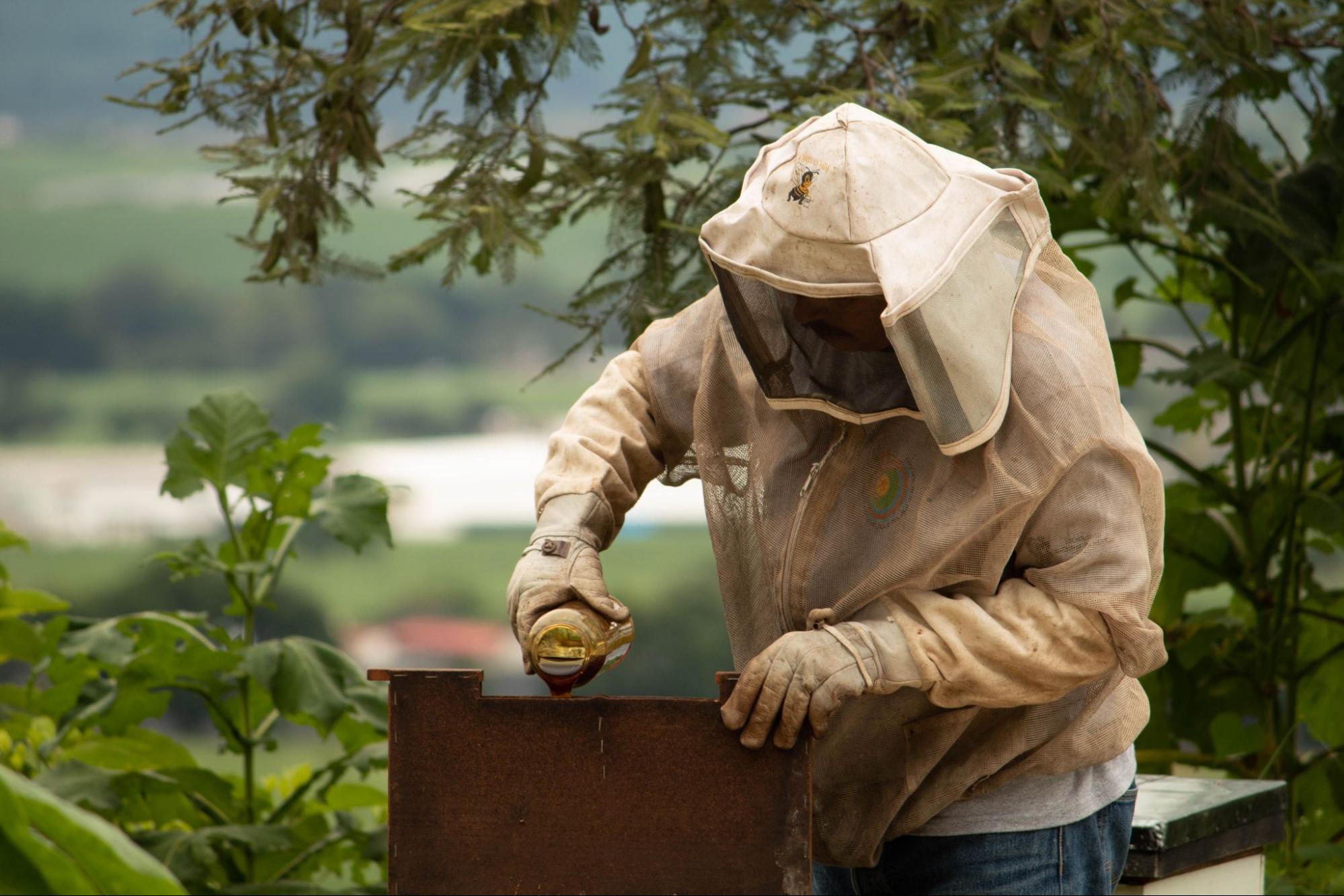
Beekeepers play a vital role in safeguarding and promoting the foraging efficiency of honey bees. By modeling the environments under their control to favor honey bee foraging, they can significantly contribute to the health and productivity of the colony.
Plant Bee-Friendly Flowering Plants
The simplest way for a beekeeper to support their hive’s foraging needs is by cultivating bee-friendly plants around their apiary. A diverse selection of plants that bloom at different times of the year can ensure that the bees have a consistent source of nectar and pollen.
Providing Clean Water Sources
Honey bees also need access to clean water for cooling their hive, feeding their brood, and diluting honey. Beekeepers can facilitate this by having a shallow water source nearby. Adding small pebbles or corks can provide landing spots and prevent the bees from drowning.
Minimizing Pesticide Use
While sometimes necessary for plant health, some pesticides can be harmful and even lethal to honey bees. Beekeepers should minimize the usage or opt for bee-friendly alternatives. When chemically treating the plants, doing so in the late evening when bees are less active can also help protect the colony.
Final Thoughts: Valuing Our Buzzing Friends
As we continue to unravel the habits and behaviors of these honey bees, we realize that even the simplest tasks they undertake contribute to a much larger ecosystem. Their dedication to foraging yields not just sustenance for their colony but also a rich biodiversity in our environment through pollination.
By understanding them better, we can figure out how to provide an optimal environment for them to thrive. Whether it’s through smart beekeeping strategies or creating bee-friendly spaces. Ensuring their survival contributes to a well-rounded ecosystem that benefits all of us.
The journey of learning about our buzzing friends doesn’t stop here. With every new discovery, we further deepen our knowledge about these fascinating creatures and our interconnected lives.
